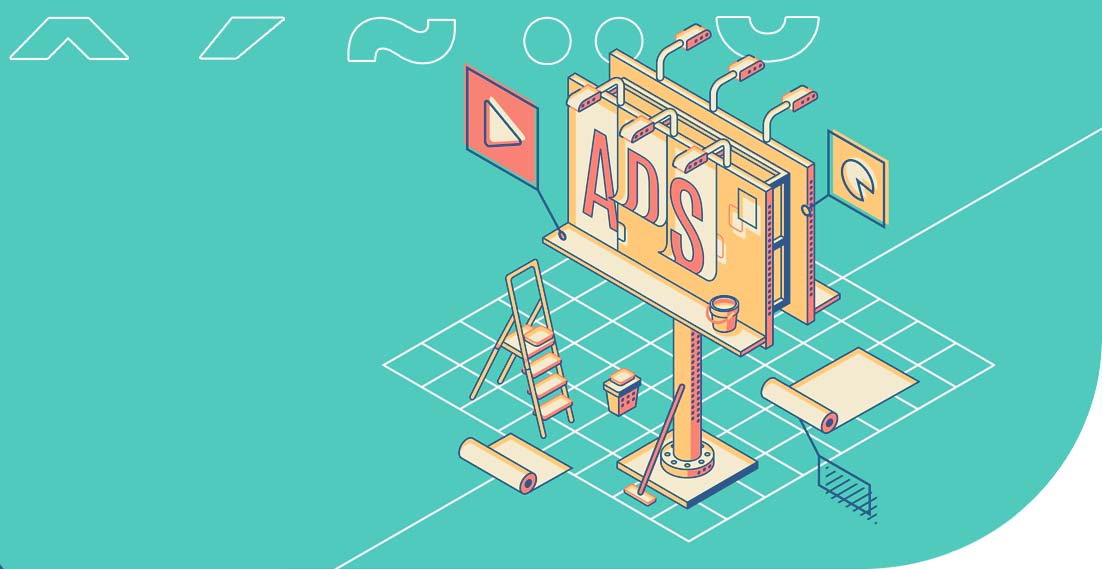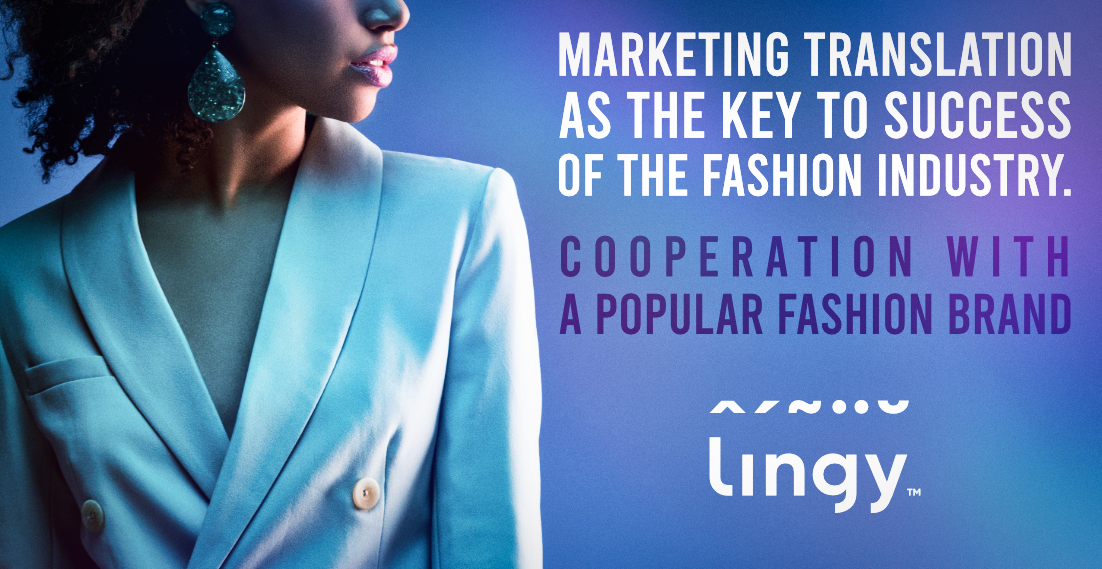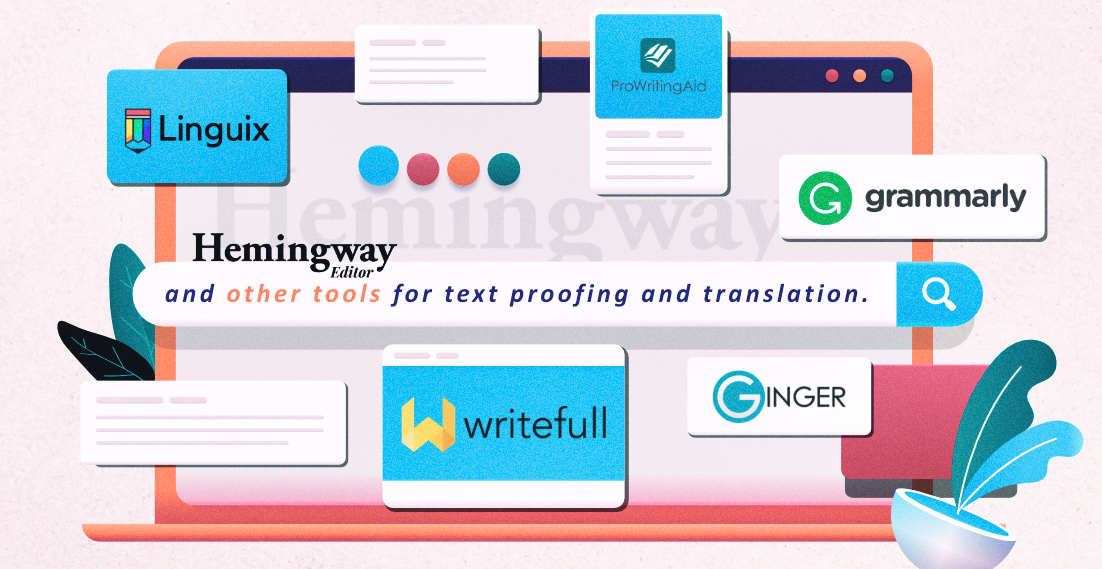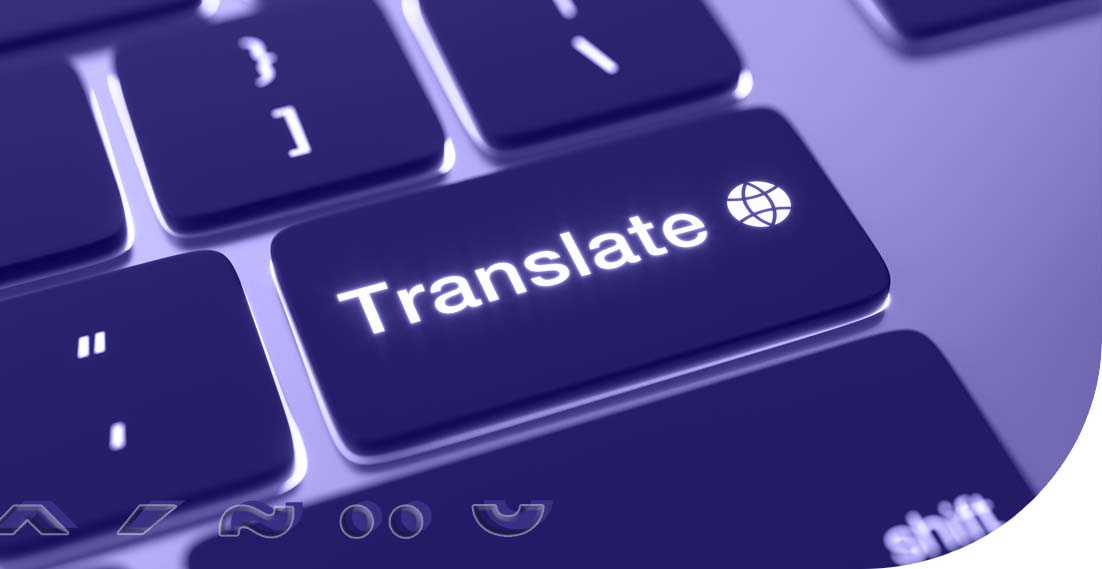Translation of advertising slogans – how not to fall into the language trap?

Advertising translation involves the process of transferring advertising messages from one market to another. The advertising discourse is created in a language that is not only a communication tool, but also an expression of culture. This makes ad translation a highly accuracy-demanding activity.
Translating slogans requires both a cultural and linguistic connection. Adapting a brand tagline to a new market is a difficult task and only the best translators are able to convey the message of the slogan itself and the emotional DNA of the brand. When they do so, translation becomes transcreation: the art of creative translation of slogans that appeal to this new audience.
Some examples of transcreation can be found later in the article.
Join us and work as a translator
Not just advertising, but brand image
The best slogans ensure instant brand recognition while creating an emotional bond with it. Due to the perfect synergy of language and sound, the slogans remain in the cultural consciousness for a long time.
Slogans convey both the brand’s history and its values. This means that poorly translated, ineffective or even offensive taglines can undermine the trust a brand has already gained.
Therefore, the translation of advertisements requires a special adaptation ability in a language, taking into consideration what has been written in another language. Due to the outcome achieved in the translation process, three translation effects can be listed:
- Zero effect – when the translation does not change anything in relation to the message of the source text, it does not affect sales in any way, either positively or negatively.
- Positive effect – when the translation brings success of products on another market.
- Negative effect – it occurs when the translation tends to discourse too far from the source text, which makes the advertising campaign unreliable and ineffective in the target language.
Translation processes – what rules apply to translating slogans?
The advertisement text consists of three essential elements: the name, which includes the product name and brand, the slogan (tagline), as well as an explanatory and/or factual comment .
When translating an advertisement, these elements may undergo linguistic and iconographic changes during the process of adaptation to the target market.
The following processes are distinguished:
- transplantation – here, the brand name is left as it is, without making any changes to it, in order to “anchor” the name in the local culture,
- transliteration – this process involves looking for sound similarity, in other words, it is a letter-by-letter transcription of the brand name,
- transmutation – the process involves a complete replacement of the source name in order to assimilate it on a new market,
- transposition – adoption of the same slogan in literal translation,
- adaptation – making the target text acceptable to the recipient. In other words, it is the transfer of concepts rooted in the source culture through other concepts of equal value in the target culture.
With regard to the techniques used, there are also three types of translation:
- literal translation – this process involves translating the form of the message, because it guarantees the durability of the identity of the products in the new space and culture,
- interpretative translation – in this case, we are translating words or phrases not with their direct equivalents, but with their interpretive substitutes,
- functional translation – this is an intermediate approach between the complete preservation of the structure of the source text and the over-interpretation of its meaning and intention.
Translation of a tagline must be close enough to the initial one, while remaining unique. Sometimes the linguistic proximity between the two languages makes it possible to use a translation of the initial tagline in the target language. Unfortunately, as you can imagine, it happens rarely.
Here are some examples:
Danone®
Using the name Danone® in France may seem obvious to us, but if we go to the United States, we will see that the spelling of the famous brand is Dannon ®. This has been adjusted to make the English pronunciation closer to the French pronunciation.
Tefal®
The Spanish slogan of the famous cookware brand Tefal® uses an ingenious and subtle play on words: “Te falta Tefal?, which literally means “Do you miss Tefal?”. The literal translation of the French slogan “Tefal, how do you do without it?” conveys the idea of the Spanish slogan.
The translator should therefore work closely with brand marketing experts to really understand the idea of the new tagline: its purpose, point of view, general approach. Understanding their vision and mission as a brand is essential, as well as knowing their intended purpose: What is the brand trying to achieve with this slogan?
Clashing with culture and emotions. Translation strategies
Keep in mind that slogans have a strong cultural and emotional component, which makes them difficult to translate. Since taglines are short and very concise, every word is essential to get your message across.
Often, it is impossible to translate the words or phrases literally, specifically because many slogans use idioms, puns or rhymes.
Translating slogans is also difficult because translators must take into account differences in the meanings, uses, or nuances of words in different regions. Slogans generate an emotional reaction, and messages are far from universal, which makes the translation process even more difficult. So how do you adapt slogans to a new market?
Brands and translators apply three main strategies:
- Some brands literally translate a slogan created for their home market. Typically, the result is poor, generating the risk of taglines sounding offensive.
For example, Pepsi in the translation of its slogan came up with “Pepsi brings your ancestors back from the grave”. This caused the brand to become ridiculed in the Chinese market. Cultural nuances must always be taken into account.
The case is similar for McDonald’s “I’m lovin’ it”. At first glance, this slogan seems easy to translate, because all cultures share the common pleasure of eating. But depending on the language the word ‘love’ has different meanings. In Spanish, the use of the verb ‘amar’ would have a shattering emotional effect, as the term is reserved for strong expressions of romantic feelings. McDonald’s had to adapt its tagline to a Spanish-speaking audience by replacing “I’m lovin’ it” with “Me encanta”.
- In some cases, brands have chosen not to translate their tagline, popularising it globally in the original language. Very often, this is not a wise decision as it is more difficult to create an emotional connection with your target audience when dealing with a term that is not in their native language.
Nevertheless, in specific contexts, such an approach may arouse curiosity in a new market or contribute to making associations that resonate in another culture.
In the automotive industry, for example, Audi applies the principle of “Advantage through technology” in most of its markets, while Volkswagen sticks to its short and effective slogan “Das Auto” everywhere, as German brands are well-known on the automotive market, repeating taglines in the original language strengthens positive associations with excellent German production quality.
- Transcreation of the original brand slogans is the most reasonable solution. Creative translations require a deep understanding of a new target culture, a real insight into the system of thoughts and emotions of the new audience. Transcreation involves taking part in the global expansion of a brand, understanding its goals in a new market and using local knowledge to achieve the desired effect. The best transcreations recreate the emotional reach of a tagline for a whole new audience.
Traits of an advertisement translator. Who can become one?
A translator specialising in the area of marketing and advertising must have a number of qualities and skills:
- knowledge of the culture of the country where the translation will be used,
- an idea about marketing, knowing the target group,
- knowing the laws of the countries where your ads will be used.
For example, the law in Saudi Arabia regarding advertising prohibits the display of the female body, with the exception of facial features, making any allusions about male-female relationships, or using images that are degrading to a human being. This means that any violation of this law will undoubtedly result in a sanction and may seriously damage the image of the product.
The best translator is…
Linguists tend to be the best translators, but also sociologists and even philosophers can be outstanding in this role. They can understand the tendencies, habits, feelings and general concepts that define a culture.
Different cultures often have different symbolism. For example, the American market promotes authenticity, “being yourself” and the cult of success. This language reflects the individualistic culture of the United States, but may not have the desired effect in a more collectivist-oriented region.
Words relating to time also vary from region to region. Translators adapting a tagline in Japanese should know that Japan is a future-oriented society, with a tendency to value visionary projects and innovations, and a belief that the current actions can shape results.
In addition, translators need to know the meaning of numbers in different cultures. For example, depending on the country, the number 13 may be associated with good luck or bad luck. The slogan that appears on “Friday the 13th” would not work in Italy and parts of China, where this number generates positive associations.
It is important to note that transcreation generates a bond between cultures. It connects the farthest cultures, thanks to companies resigning from original advertising in favour of the culture of their new target market. If, on the other hand, brands do not want their taglines to be adapted to a different reality because they no longer fit their original identity, translation can be a powerful form of cross-cultural exchange. It subtly modulates concepts so that values and slogans resonate in a new space. For example, an original brand tagline might evoke a relatively common need, such as the desire to succeed. A qualified translator will present the concept so that it is associated with the definition of success in the target market.
Perfect translations – examples of successful transcreations
Here are some examples of slogans that have been perfectly translated into other languages.
Haribo
The German manufacturer of sweets, Haribo, advertises on its home market with a rhyming slogan: “Haribo macht Kinder froh, und Erwachsene ebenso”. The literal translation would be “Haribo makes children happy and adults too”, which obviously sounds more awkward and less attractive. Since Haribo commercials were aired on television, it was important to keep the rhyme and create a catchy jingle. With a creative translation of the slogan, focusing on Haribo’s brand identity, rhythm and rhyme, a new French version was created: “Haribo c’est beau la vie, pour les grands et les petits!” or Portuguese: “Haribo doces sabores – para os pequenos e os maiores!”
Johnny Walker
The famous whiskey brand uses the iconic logo of the walking man along with the slogan “Keep Walking“. When launching an international marketing campaign to modernise the brand, the company decided to translate its slogan identically for all cultures, seeing a common and to some extent universal element in the desire to move forward in life.
DeBeers
De Beers slogan “A diamond is forever” is easily recognizable in most Western countries. It evokes a refined emotional response and presents diamonds as an eternal luxury while reminding you of the enduring commitment embodied by a diamond given as an engagement ring. But a literal translation of this tagline into Mandarin wouldn’t convey any of these associations, reflecting only the physical durability of the product. Instead, the transcreation provided an elegant solution: “A diamond is eternal, it is passed down from generation to generation.” By adding a cross-generational element to the relationship between diamonds and romantic love, the slogan also captures the importance of family in Chinese culture.
Translation disasters. How not to do it.
The translator faces many difficulties in translating advertisements, especially since the advertising discourse is often full of cultural references specific to a given country or language of origin: puns, phraseological expressions, etc. An error in the translation of an advertising message can lead to a real disaster. We have listed some examples of bad translations of ads below.
KFC
When KFC launched in China in 1987, the brand wanted to translate its famous tagline “Finger lickin’ good!”. Needless to say, the result was poor, as the phrase turned into “We’ll eat your fingers.”
Honda
The automotive industry has also experienced many translation errors. In 2001, Honda released a new car model for international use, the “Honda Fitta”. The problem was the Scandinavian market, as ‘Fitta’ is a rather offensive slang word used in Sweden, Finland, Denmark and Norway and means female genitalia. Some time later, the so-called The Honda Fitta was thus renamed to Honda Jazz.
Parker
Fountain pen and ballpoint brand Parker, launching its latest ballpoint pen in Mexico, wanted to adapt the slogan: “It won’t leak in your pocket and embarrass you” translating the verb ‘embarrass’ to ‘embarazar’, which means “to make a baby…”. As you can imagine, the end result was tragic: “It won’t sink in your pocket and make you pregnant.”
Electrolux
The Scandinavian brand has launched a campaign in the United States. They began promoting vacuum cleaners with the tagline: “Nothing sucks like an Electrolux” to express “Nothing cleans better than Electrolux”. But in the United States, stating that something sucks primarily means that it’s no good, which ultimately results in the tagline sounding more or less like “Nothing is as bad as Electrolux”.
Chevrolet
The new campaign of the Chevrolet Nova made the Hispanic population in the United States laugh, as “No va’ in Spanish means “don’t walk”, “don’t drive” or “it doesn’t work”. This car may not have been a great success with Spanish speakers, given the contradictory nature of the poster.
American Airlines
An American Airlines advertising campaign wanted to promote its new leather seats in Mexico with the tagline: “Fly in leather”. But because of an incorrect translation, the slogan became “Vuela encuero”, which simply means “Fly naked”.
Schweppes
When the Schweppes brand first appeared in Italy, due to a bad translation, it was originally “Schweppes Tonic Water”, in French “Schweppes, eau tonique”, became “Schweppes Toilet Water”. This is a mistake that has cost the brand very much.
Coca Cola
The world-famous Coca-Cola Company made a big mistake before finding the right translation of its slogan into Chinese. The brand wanted to literally translate “Coca-Cola” to “Kekoukela”, which in some dialects means “Female horse stuffed with wax” or even “Toad stuffed with wax”. Finally, after searching through thousands of characters, they arrived at Kokoukole or Kekoukele, which fits perfectly as it means: “Happiness in the mouth”.
Got milk campaign
The popular “Got milk?” campaign was aimed at conquering the market in Mexico. Translating the catchphrase to “Do you make milk?” or even better, “Are you breastfeeding?” completely reversed the original meaning of the message, which was to encourage the consumption of cow’s milk.
Enfamil
Enfamil, created by Mead Johnson Nutritionals, experienced a problem translating the product instructions. Again, due to poor English to Spanish translation, milk (the advertised product) could cause heart problems in the infant, or kidney problems, and even lead to death. This had serious consequences for the brand.
Vicks
The American pharmaceutical brand Vicks was completely unaware of the fact that ‘v’ in German sounds like an ‘f’. This way, Vicks sounded like “Ficks”, which is a verb referring to sexual intercourse.
Ford
This ad, intended for Portuguese-speaking countries, had a few minor problems with the translation of the term “Pinto”, which literally means ‘penis’ in English. The translated slogan of the poster was therefore: “Put your penis under the tree.”
Moreover, this car giant discovered that in Belgium, luring customers with dead bodies in every car is not the best way to sell.
Hoping to emphasize the excellent workmanship of the cars, Ford launched an advertising campaign in this European country under the original slogan “Every car has a high-quality body”. However, when translated into Belgian, the slogan was transformed into “Every car has a high-quality corpse”.
HSBC bank
HSBC has translated “Assume nothing” to “Do nothing”. This forced the bank to change the nature of its entire global private banking business. In 2009, this global bank spent millions of dollars to do away with the 5-year campaign that made no sense in other languages.
Conclusions
As we can see, the adaptation of slogans to a new market is an art that requires a great knowledge of the translated language to achieve the intended outcome. By combining brand marketing and understanding the local mentality, creative translators manage to generate a strong connection between brands and cultures.
Correctly reproduced taglines are works of art to be appreciated. They greatly contribute to the success of brands on the global arena. The best slogans are obvious. Developed by means of creative craftsmanship, well translated, they allow the brand to create a deep emotional connection with new recipients of messages and succeed in the markets.
If you want to verify your skills as a marketing translator and create the best image of brands and products in other countries, feel free to contact us about a possible cooperation.
Read also:
Tools useful in the work of a translator – simplifying your daily tasks
Discover the best educational platforms with online courses – TOP 3
What is an infographic and what is it intended for?
Join us and work as a translator
Marketing translation as the key to success of the fashion industry. Cooperation with a popular fashion brand
We cooperated with many customers on a daily basis. They include local companies, international enterprises and well-known brands. What are the similarities between all of them? Everyone expects high-quality translations that will help in business development. Additionally, professional translations affect their image, contribute to the opinions of recipients and are the decisive factor when it […]
Hemingway Editor and other tools for text proofing and translation
Typically, content writers first note down the message they wish to put across to their audience. Then, they re-read and edit the text. This way, they can achieve better readability, understanding and structure, and at the same time they can correct any errors in the content. It is a complex process, but fortunately there are […]
Top 8 Languages for E-commerce purposes: Boosting Global Reach Through Effective Translation
Do you manage an e-shop and want to source customers abroad to increase profit? Translation will be the basis for reaching foreign recipients with your offer. You need to start speaking their local language and adjust product descriptions or service descriptions to the country where you intend to sell them. This process of adapting your […]
Tools useful in the work of a translator – simplifying your daily tasks
Working on translations is a dream of many people who are fascinated by languages and the broadly-defined linguistics. Being a part of this industry is associated with many opportunities contributing to your professional growth, but it also has quite a few limitations. It can be demanding when you receive many translation projects, specifically when they […]



